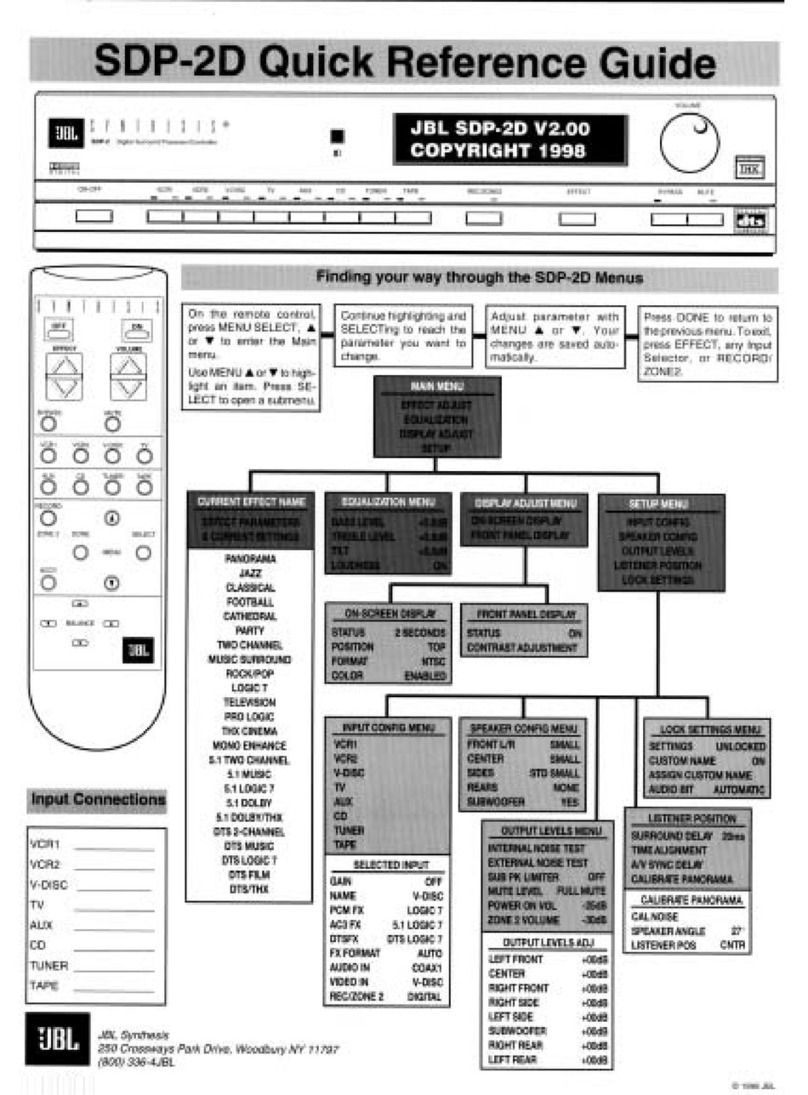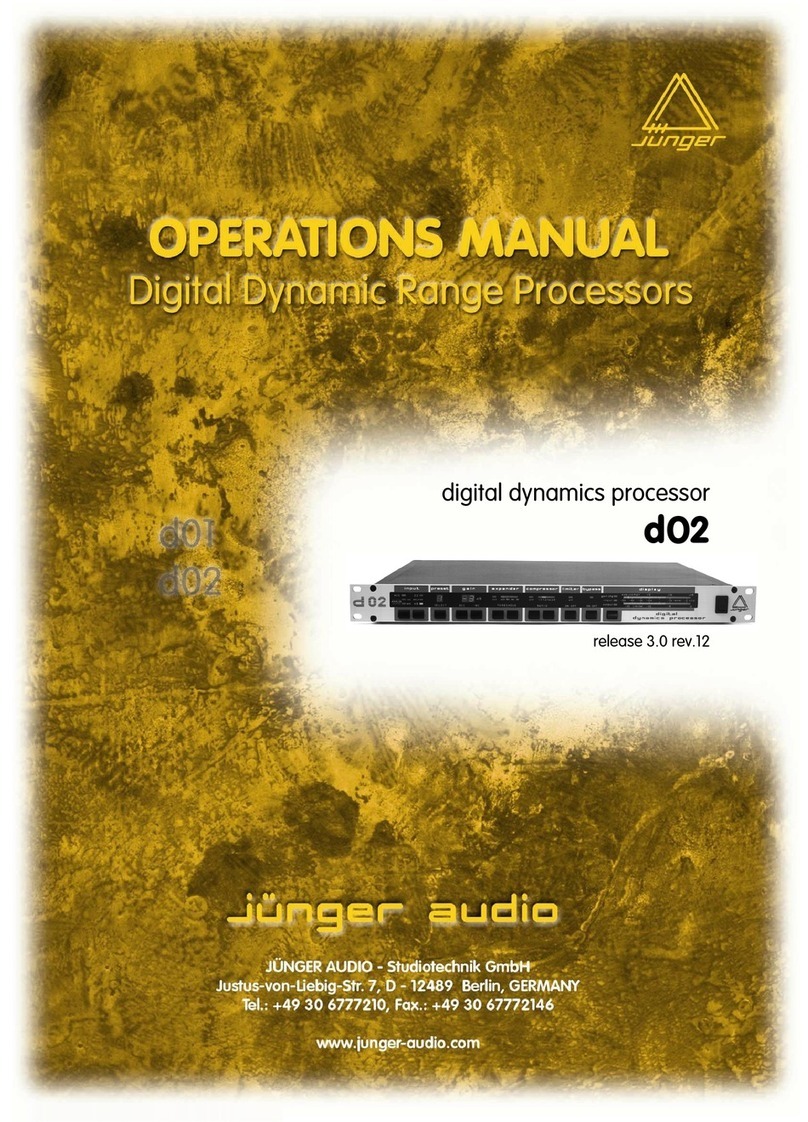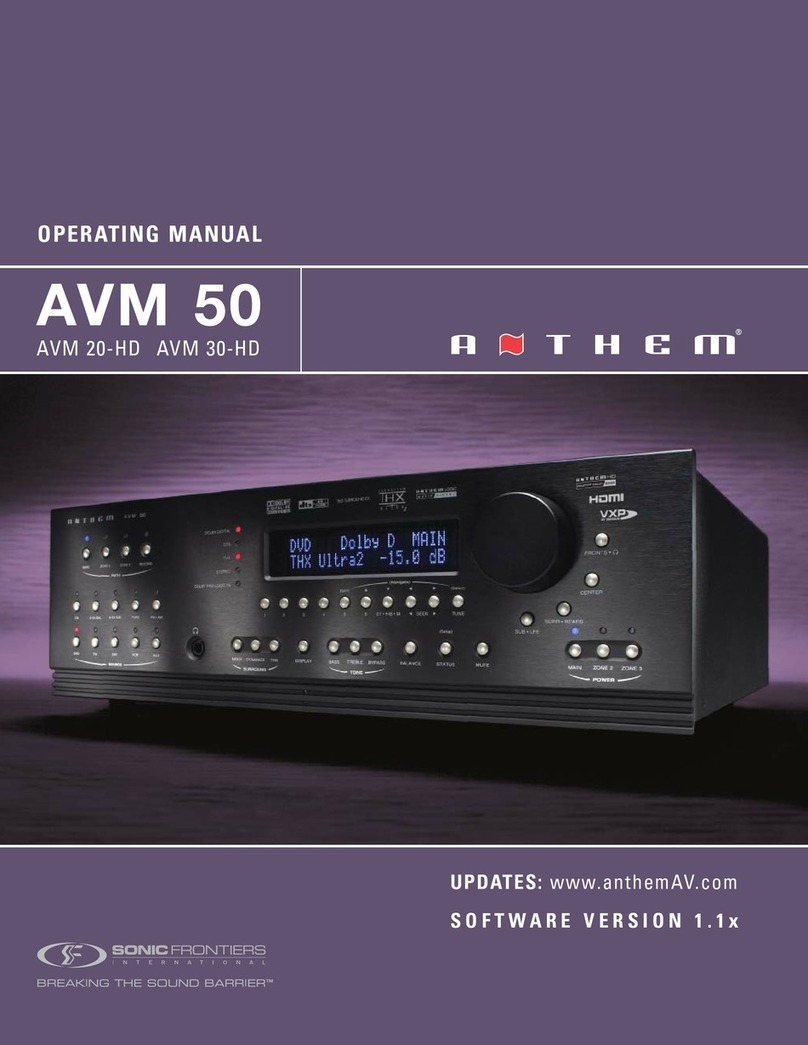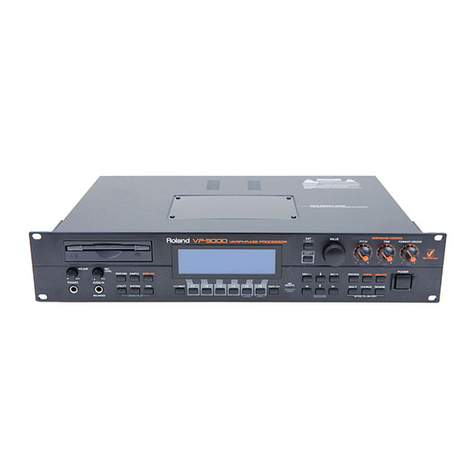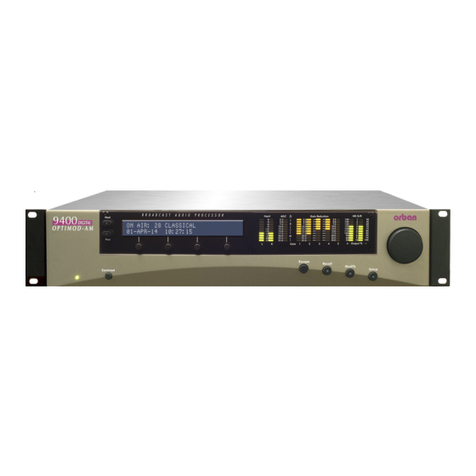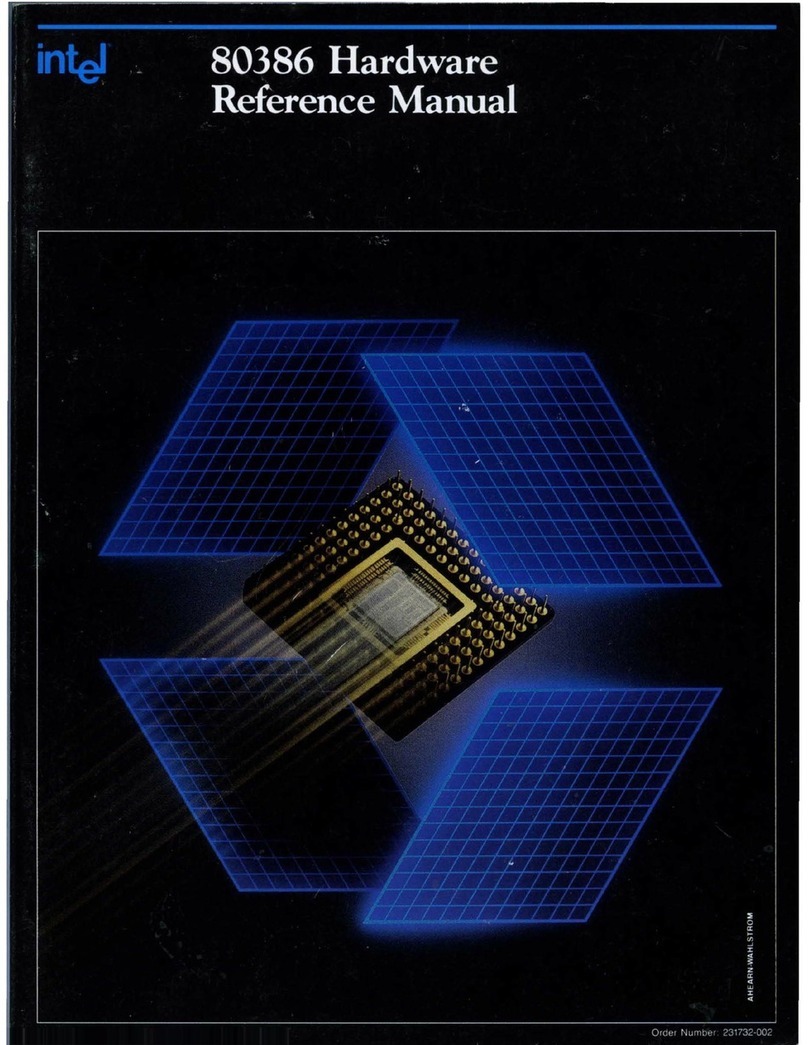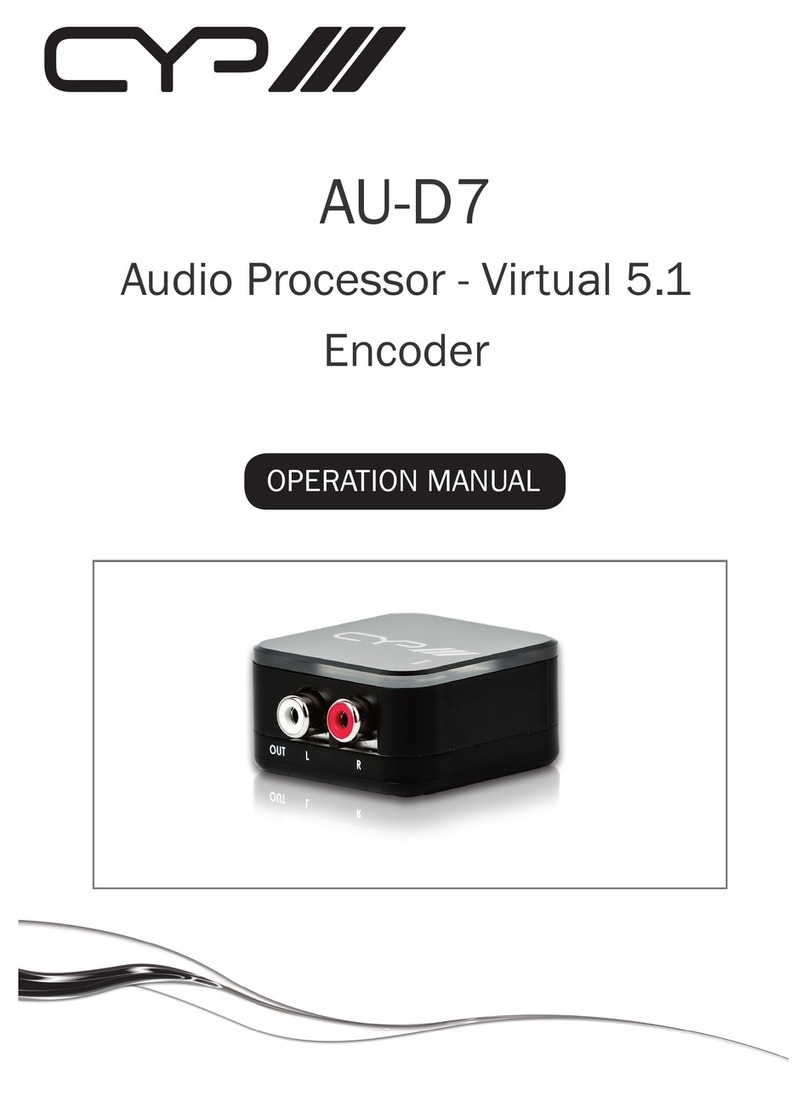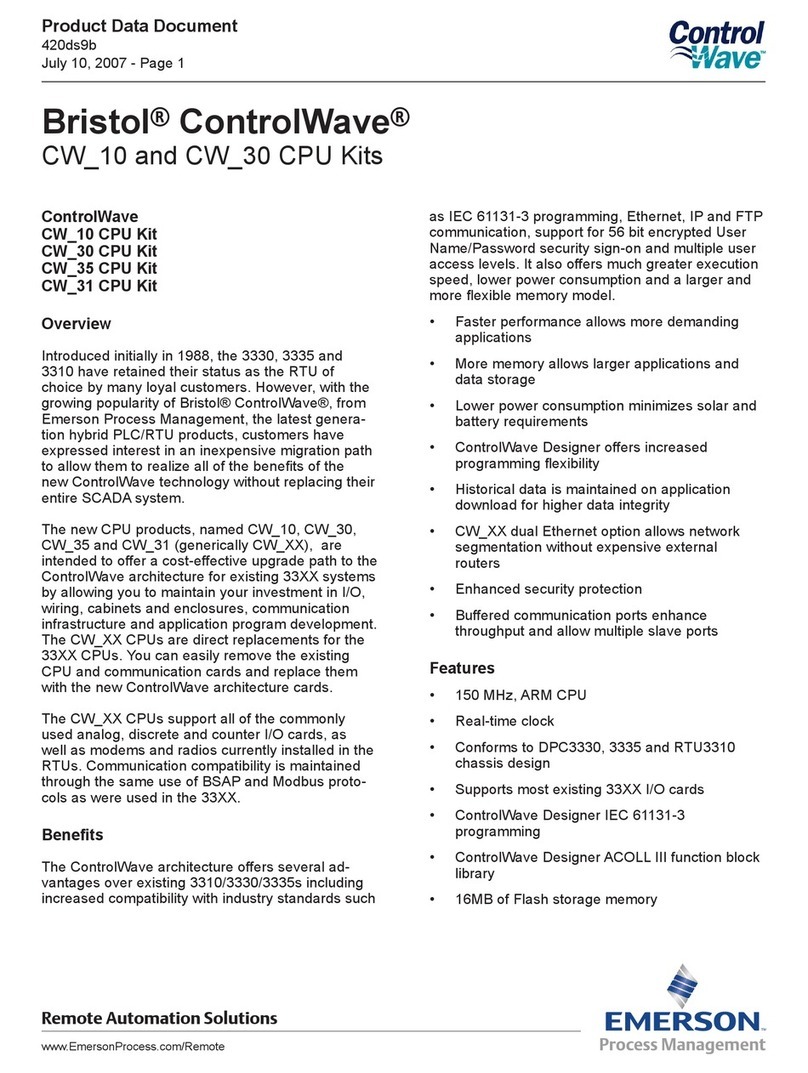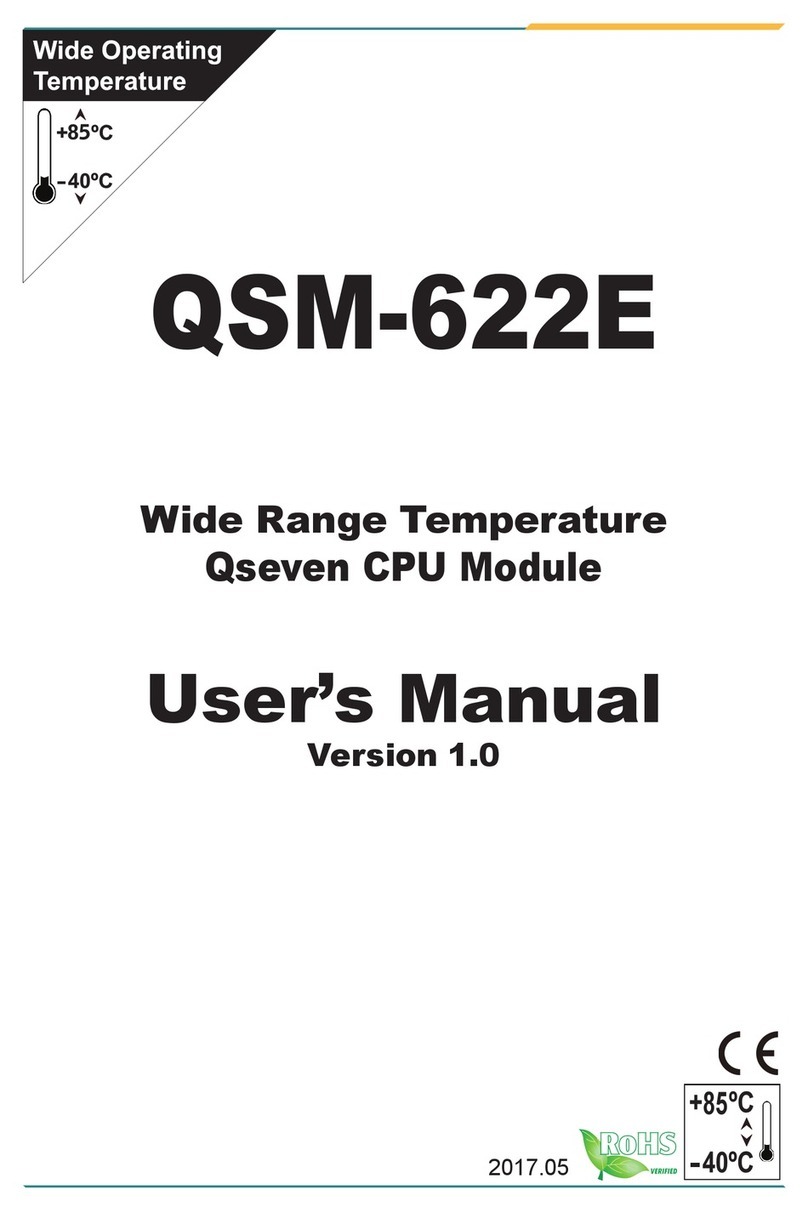BESTEK MEB-7600 User manual

1
Embedded System
MEB-7600
Always at the forefront of innovation
User Manual

2
This publication contains information that is protected by copyright. No part of it may be reproduced in any
form or by any means or used to make any transformation adaptation without the prior written permission
from the copyright holders.
This publication is provided for informational purposes only. The manufacturer makes no representations or
warranties with respect to the contents or use of this manual and specifically disclaims any express or implied
warranties of merchantability or fitness for any particular purpose. The user will assume the entire risk of the
use or the results of the use of this document. Further, the manufacturer reserves the right to revise this
publication and make changes to its contents at any time, without obligation to notify any person or entity of
such revisions or changes.
© 2011. All Rights Reserved.
All trademarks and registered trademarks of products appearing in this manual are the properties of their
respective holders.
This equipment has been tested and found to comply with the limits for a Class A digital device, pursuant to
Part 15 of the FCC rules. These limits are designed to provide reasonable protection against harmful
interference when the equipment is operated in a residential installation. This equipment generates, uses,
and can radiate radio frequency energy and, if not installed and used in accordance with the instruction
manual, may cause harmful interference to radio communications. However, there is no guarantee that
interference will not occur in a particular installation. If this equipment does cause harmful interference to
radio or television reception, which can be determined by turning the equipment off and on, the user is
encouraged to try to correct the interference by one or more of the following measures:
Reorient or relocate the receiving antenna.
Increase the separation between the equipment and the receiver.
Connect the equipment into an outlet on a circuit different from that to which the receiver is connected.
Consult the dealer or an experienced radio TV technician for help.
Notice:
1. The changes or modifications not expressly approved by the party responsible for compliance could void
the user’s authority to operate the equipment.
2. Shielded interface cables must be used in order to comply with the emission limits.
Copyright
Trademarks
FCC and DOC Statement on Class A

3
1. Warranty does not cover damages or failures that are raised from misuse of the product, inability to use
the product, unauthorized replacement or alteration of components and product specifications.
2. The warranty is void if the product has been subject to physical abuse, improper installation, modification,
accidents or unauthorized repair of the product.
3. Unless otherwise instructed in this user’s manual, the user may not, under any circumstances, attempt to
perform service, adjustments or repairs on the product, whether in or out of warranty. It must be
returned to the purchase point, factory or authorized service agency for all such work.
4. We will not be liable for any indirect, special, incidental or consequential damages to the product that has
been modified or altered.
It is quite easy to inadvertently damage your PC, system board, components or devices even before installing
them in your system unit. Static electrical discharge can damage computer components without causing any
signs of physical damage. You must take extra care in handling them to ensure against electrostatic build-up.
1. To prevent electrostatic build-up, leave the system board in its anti-static bag until you are ready to install
it.
2. Wear an antistatic wrist strap.
3. Do all preparation work on a static-free surface.
4. Hold the device only by its edges. Be careful not to touch any of the components, contacts or connections.
5. Avoid touching the pins or contacts on all modules and connectors. Hold modules or connectors by their
ends.
Important:
Electrostatic discharge (ESD) can damage your processor, disk drive and other
components. Perform the upgrade instruction procedures described at an ESD
workstation only. If such a station is not available, you can provide some ESD
protection by wearing an antistatic wrist strap and attaching it to a metal part of the
system chassis. If a wrist strap is unavailable, establish and maintain contact with the
system chassis throughout any procedures requiring ESD protection.
Warranty
Static Electricity Precautions

4
To avoid damage to the system:
• Use the correct AC input voltage range.
To reduce the risk of electric shock:
• Unplug the power cord before removing the system chassis cover for installation or servicing. After
installation or servicing, cover the system chassis before plugging the power cord.
Battery:
• Danger of explosion if battery incorrectly replaced.
• Replace only with the same or equivalent type recommend by the manufacturer.
• Dispose of used batteries according to local ordinance.
Before using the system, prepare basic system components.
If the system comes as a barebone; that is, none of the key components, including processor, memory, and
hard drive has been pre-installed as part of your purchase, you will need to at least ensure a compatible
counterpart is located and installed.
You will also need a few external system peripherals intended for the use of the system, a common pool with
at least a keyboard, a mouse, and a monitor is thus suggested.
Safety Measures
Before Using the System

5
Table of Content
Copyright.................................................................................................................................................................
2
Trademarks..............................................................................................................................................................
2
FCC and DOC Statement On Class A .........................................................................................................................2
Warranty ..................................................................................................................................................................3
Static Electricity Precautions ....................................................................................................................................3
Safety Measures.......................................................................................................................................................4
Before Using the System Board ................................................................................................................................4
Table of Content.......................................................................................................................................................5
Chapter 1 General Information
1.1 Main
Feature......................................................................................................................................................7
1.2
Specifications ....................................................................................................................................................
8
1.3 System Layout.................................................................................................................................................... 9
1.4 Indicators and Features .................................................................................................................................. 10
Chapter 2 Preparation
2.1 Before You Begin ........................................................................................................................................ 12
2.2
Precautions .....................................................................................................................................................
12
2.3 Open Up Top Cover
..........................................................................................................................................
13
2.4 Removing Power Supply ................................................................................................................................. 14
2.5 Accessing Processor & Memory........................................................................................................................ 14
2.6 Accessing Expansion Card............................................................................................................................... 15
2.7 Adding SATA Hard Drive.................................................................................................................................. 16
2.8 Changing System Fan and Filter...................................................................................................................... 18
2.9 Adding Wall Mount Brackets .......................................................................................................................... 19
Chapter 3 Operation
3.1 Turning On The System.................................................................................................................................... 21
3.2 Installing
Operating System & Drivers........................................................................................................
22
3.3 Understanding LED Indicators ........................................................................................................................ 23
Chapter 4 BIOS Setup
4.1 Entering Setup................................................................................................................................................. 26
4.2 Getting Help.................................................................................................................................................... 26
4.3 Control Keys .................................................................................................................................................... 26
4.4 The Main Menu............................................................................................................................................... 27
4.5 The Advanced Menu........................................................................................................................................ 28
4.6 The Chipset Menu.................................................................................................................................................. 34
4.7 The Boot Menu................................................................................................................................................ 36
4.8 The Security Menu .......................................................................................................................................... 37
4.9 The Exit Menu ................................................................................................................................................. 38
Chapter 5 Q&A..................................................................................................................... 39

6
Chapter 1
General Information

7
Processor Performance
MEB-7600 is an embedded wall mount that, pre-installed with BNX-A87P motherboard, featuring on
Intel® Q87 chipset, supports Intel® Gen-4 LGA1150 Celeron®, Pentium®, Core®-i3/i5/i7 processors that
carry the built-in Intel® HD Graphic engine. Below is a brief list of available processors as a quick
reference:
Celeron® Processor: G1820/G1820TE
Pentium® Processor: G3420/G3320TE
Core®-i3 Processor: i3-4330/i3-4330TE
Core®-i5 Processor: i5-4570S/i5-4570TE
Core®-i7 Processor: i7-4770S/i7-4770TE
32GB Memory for 64bit OS
The four Dual Channel DDR3 DIMM slots are designed to carry up to 32GB DDR3 1066/1333/1600MHz
SDRAM with Non-ECC support, ideally facilitating applications that demand total memory capacity for the
use in 64bit OS, beyond the 4GB barrier inherent in the 32bit OS.
Multiple Expansion Slots
The system comes with a variety of expansion slots, including, 1* PCIe X16 Slot, 1* PCIe X4 Slot, and 5*
PCI Slots, enabling the system with extra functions from add-on cards, such as graphic, communication,
storage, networking, and controlling.
List of Key Features
Intel® Q87 Chipset
Intel® LGA1150 Gen-4 Desktop Celeron®, Pentium®, Core®-i3/i5/i7 Processor
Four DDR3 RAM Slots up to 32GB
Two 2.5” SATA HDD Trays
One 2.5” + one 3.5” Internal SATA HDD Drive Bays
One Optional Slim DVD-RW Drive
DVI-D + VGA Ports
Four USB 3.0: 4* Rear Ports
Four USB 2.0: 2* Front Ports + 2* Rear Ports
Six Serial Ports: One supporting RS-232/422/485
Two Intel® GbE LAN Ports
One PCIe X16 Slot
One PCIe X4 Slot
Five PCI Slots
Optional Parallel Port (on PCI bracket)
Three Audio Ports
Front side Switch and Indications
PS2 300W (or above) ATX Power Supply
Two-way installation
Compact Size: 145 (W) x 400 (D) x 368 (H) mm
1.1 Main Feature

8
Construction
Form Factor
Wall Mount Chassis for Standard ATX Motherboard
Material
Heavy duty cold rolled electroplated steel
Dimension (W x D x H)
Chassis (145 x 400 x 368mm), Carton (230 x 500 x 450mm)
Weight
7.5 Kg
Color
Black
Certification
CE/FCC
System
Processor
Intel® 4th Generation Core™ i7/i5/i3/ Pentium® / Celeron® Processor
Memory
4x DDR3 1333 DIMM up to 32GB, Non-ECC, Un-buffered Memory
Power
PS2 ATX (300W or above) AC input, 100~240Vac, 50-60Hz
Drive Bays
SATA HDD
2 (2.5”) Trays + 1 (2.5”) HDD + 1 (3.5”) HDD
Slim-DVD
1 (Optional)
Cooling
Air Filtering
Front Side
Fan
1x CPU Fan, 1x 80mm Front Fan, 2x Optional 40mm Rear Fan
Connectivity
Communication
Intel® i217LM PHY & i210 PCIe GbE Controller, Support WOL & PXE
Front I/O
2x USB 2.0, 1x Power Switch, 1x Reset Switch
1x Power LED, 1x HDD LED
Rear I/O
1x PS/2, 1x DB9 RS232/422/485, 1x HDMI, 1x DisplayPort, 1x DVD-D
4x USB 3.0 + 2x USB 2.0, 2x RJ45, 3x Audio Jacks, 1x LPT, 1xAC-in
Expansion Slots
Rear Access
1x PCIe 3.0 X16 Slot, 1x PCIe 2.0 X4 Slot, 5x PCI Slots
Environment
Operating Temperature
0 ~ 50oC
Storage Temperature
-20 ~ 70oC
Operating Humidity
0% ~ 90%
Storage Humidity
0% ~ 90%
1.2 Specifications

9
Figure 1.1: System Layout of MEB-7600
1.3 System Layout

10
►Front View
►Rear View
1.4 Indicators & Features

11
Chapter 2
Preparation

12
A stable and clean working environment are essential. Dust and dirt can get into components and cause a
malfunction. Use containers to keep small components separated.
Adequate lighting and proper tools can prevent you from accidentally damaging the internal components. Most
of the procedures that follow require only a few simple tools, including the following:
A Philips screwdriver
A flat-tipped screwdriver
A set of jewelers Screwdrivers
A grounding strap
An anti-static pad
Using your fingers can disconnect most of the connections. It is recommended that you do not use
needle-nosed pliers to disconnect connections as these can damage the soft metal or plastic parts of the
connectors.
Before working on internal components, make sure that the power is off. Ground yourself before touching any
internal components, by touching a metal object. Static electricity can damage many of the electronic
components. Humid environment tend to have less static electricity than dry
environments.
A grounding strap is
warranted whenever danger of static electricity exists.
Computer components and electronic circuit boards can be damaged by discharges of static electricity. Working
on the computers that are still connected to a power supply can be extremely dangerous. Follow the guidelines
below to avoid damage to your computer or yourself:
Always disconnect the unit from the power outlet whenever you are working inside the case.
If possible, wear a grounded wrist strap when you are working inside the computer case. Alternatively,
discharge any static electricity by touching the bare metal chassis of the unit case, or the bare
metal body
of any other grounded appliance.
Hold electronic circuit boards by the edges only. Never touch the components on the board unless it is
necessary to do so. Do not flex or stress the circuit board.
Leave all components inside the static-proof packaging that they shipped with until they are ready for
installation.
Use correct screws and do not over tighten screws.
2.1 Before You Begin
2.2
Precautions

13
This is the first step of all to proceed with, if you are to install (or change) a processor (hard drive or memory
module).
Please remove the 4 screws as indicated in the places below, prior to any moving of the top cover. It is
recommended to push the top cover backwards so as to detach the cover tongue out of the snatch-up at front
side, before the lift-up or removal of the top cover.
Securing the screws is essential for they would be re-used for the restoration of the top cover, after all
preparation procedures are completed.
2.3
Open Up Top Cover

14
It is sometimes necessary to remove the power supply if you are to touch the part of processor, cooler, memory,
or any particular part/cable underneath the power supply module. Removing power supply requires massive
amount of complicated work to be carefully minded, including the disengagement of all power cables plugged
on the motherboard and hard drives, suggesting the possibility to finish up the job in half an hour as total.
Please assess thoughtfully prior to this operation.
Procedures:
(1) Turn off the system and open up the top cover.
(2) Disengage the 24-pin ATX and 4-pin 12V power cable off the motherboard.
(3) Disengage the SATA power cable off the 2.5” Hard Drive, if there is any.
(4) Remove the 2 side screws that snatch the supporting bracket against the chassis (from inside).
(5) Remove the 4 screws that secure the rear side of the power supply.
(6) It is time to gently and carefully withdraw the power supply out of the chassis.
Please refer to the Manual of BNX-A87P motherboard for substantial details as to adding processor, cooler,
and memory.
2.4 Removing Power Supply
2.5 Accessing Processor & Memory

15
MEB-7600 supports the following expansion slots. Please make sure the card to be added is compatible with
the slots introduced above.
(1) One PCIe 3.0 X16: Compatible with PCIe X1/X4/X8/X16 Cards.
(2) One PCIe 2.0 X4: Compatible with PCIe X1/X4 Cards.
(3) Five PCI: Compatible with 5V or Universal Type PCI card.
Procedures:
(1) It is assumed that the system is turned off and the top cover is detached before accessing these slots.
(2) As indicated below, one screw is to be removed to release the bracket that protect each slot. Please remove the
screw and the bracket of the slot to be used.
(3) Insert your PCI/PCIe card, add the bracket screw back to complete the work.
(4) To remove a PCI/PCIe card, proceed with the above steps reversely.
2.6 Accessing Expansion Card

16
Procedures to add 2.5” SATA Hard Drives into front tray:
(1) Turn off the system.
(2) Push the door notch aside and the door would
pop-up open.
(3) Insert the 2.5” SATA HDD into the tray, and push the
door to close it.
Please be noted that if the motherboard BIOS has configured the SATA mode to AHCI mode, removing one of
the SATA HDDs without shutting down the system is presumably allowed, provided this Hard Drive is not the
system Hard Drive. However, mind to install Intel® AHCI driver and disengage this Hard Drive by using Intel®
RST software prior to pulling it out. A similar procedure can be repeated to add the Hard Drive back. After the
new Hard Drive is added back to tray, accessing the software to engage the Hard Drive so it can be attached to
the controller before you can see and use it. In case of RAID mode, acquiring a basic concept of to adequately
operate RAID HDDs is adamant.
Procedures to add 2.5” internal SATA Hard Drive:
(1) Turn off the system and open up the top cover.
(2) Find the four screws fastened on the Hard Drive bracket (red circles as below). Remove these screws to acquire
the Hard Drive bracket.
2.7 Adding SATA Hard Drive

17
(3) As illustrated below, please have the 2.5” Hard Drive assembled with this bracket, and add four screws enclosed
in the accessory screw bag for a perfect and firm Hard Drive subset.
Procedures to add 3.5” SATA Hard Drives:
(1) Turn off the system and open up the top cover.
(2) Find the four screws fastened on the Hard Drive bracket (red circles as below). Remove these screws to acquire
the Hard Drive bracket.
(3) As illustrated below, please have the 3.5” Hard Drive assembled with this bracket, and add from below the
subset four screws enclosed in the accessory screw bag for a perfect and firm Hard Drive subset. If the
bracket and HDD do not match by screw holes, please turn around the HDD to achieve this goal.
(4) Restore this Hard Drive subset back to the chassis, and add the four screws back to position.
(5) Add SATA signal cable and SATA power cable to complete the work.

18
Please remove the four screws to detach the front bezel. After the bezel is detached, system fan and internal
filter can be accessed. Remove one screw (the blue circle) to disengage the fan bracket off the front panel.
Please put the fan cable off the motherboard connector before pulling the fan bracket out of the place.
The two screws below (red circles) hold the filter cover on the fan bracket. Please get rid of them to access the
filter. As the filter is not at the place, the four screws that hold the system fan on this bracket can be found.
Twist them to have them off the place just to separate the system fan from the bracket.
2.8 Changing System Fan and Filter

19
Attach the two wall mount brackets at the bottom of the system, and add eight screws at the positions below
to complete the work.
2.9 Adding Wall Mount Brackets

20
Chapter 3
Operation
Table of contents
Popular Processor manuals by other brands

Sony
Sony SDP-E300 operating instructions

Krell Industries
Krell Industries Digital-to-Ana|og Processor STUDIO Owner's reference
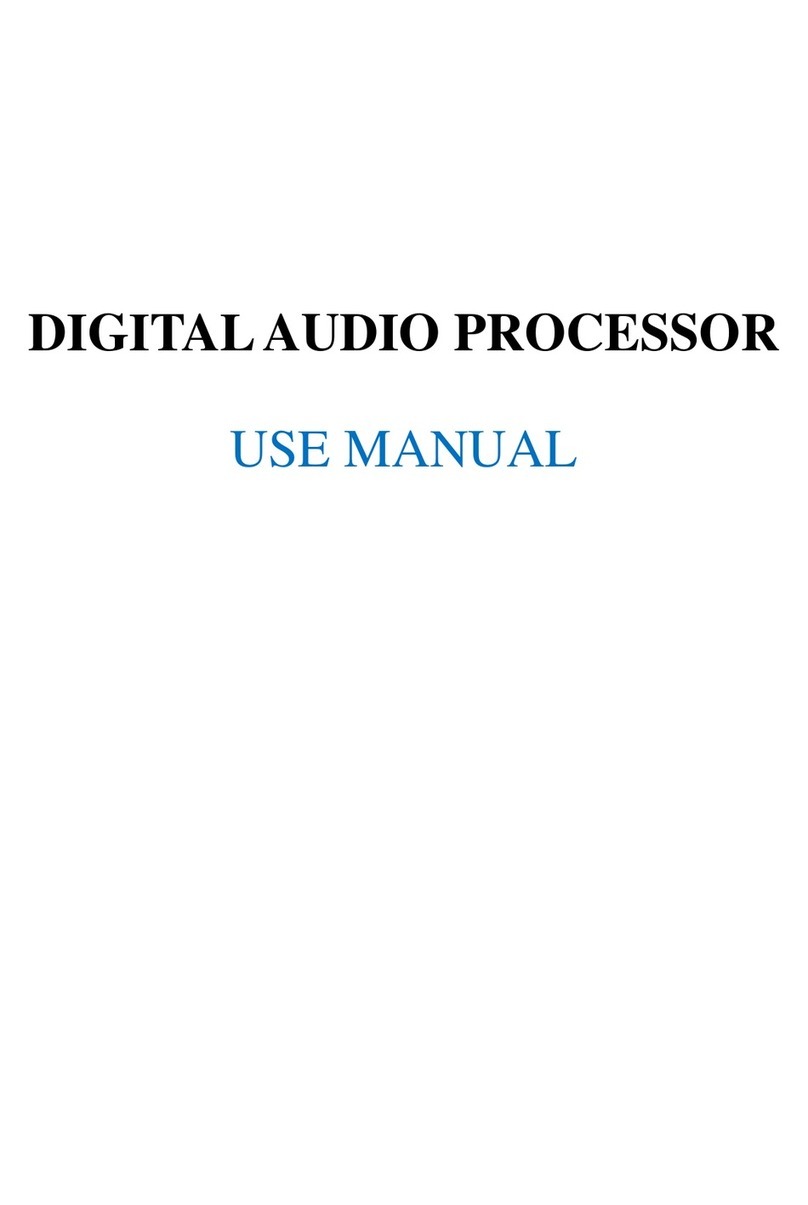
Desam
Desam DMD2 Series Use manual

Wheatstone Corporation
Wheatstone Corporation AirAura X1 Technical manual
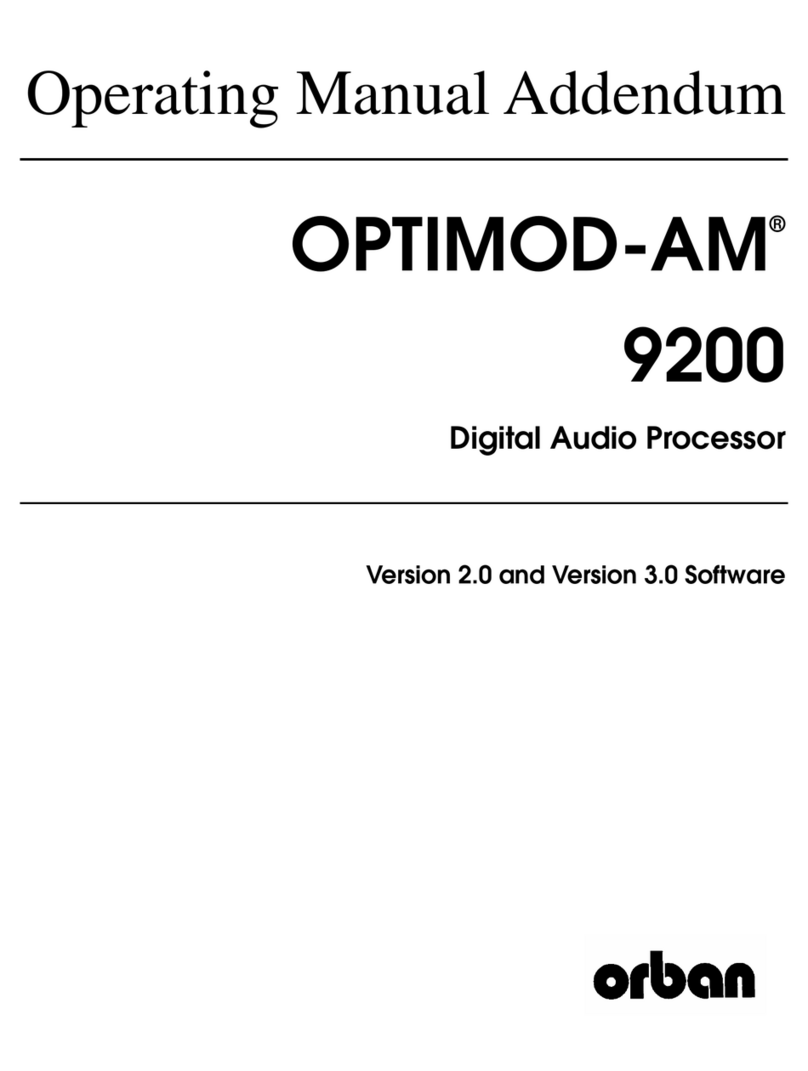
Orban
Orban Optimod-AM 9200 Operating manual addendum
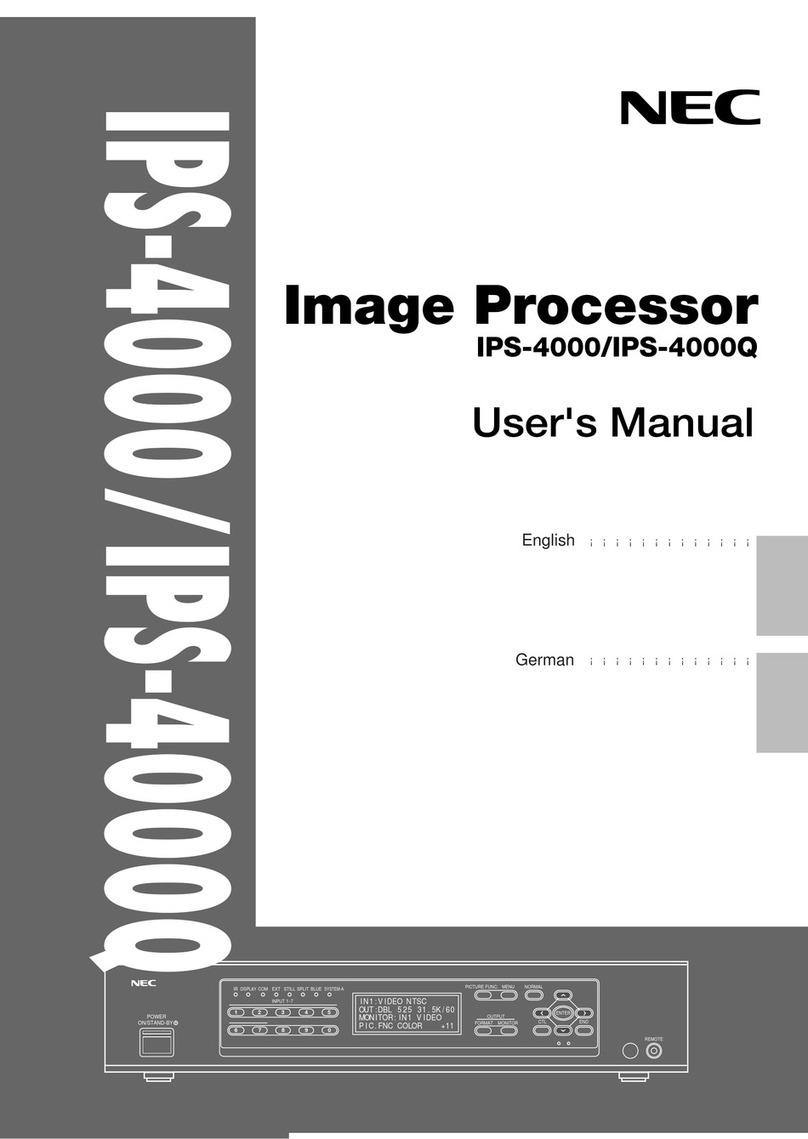
NEC
NEC IPS-4000 user manual
